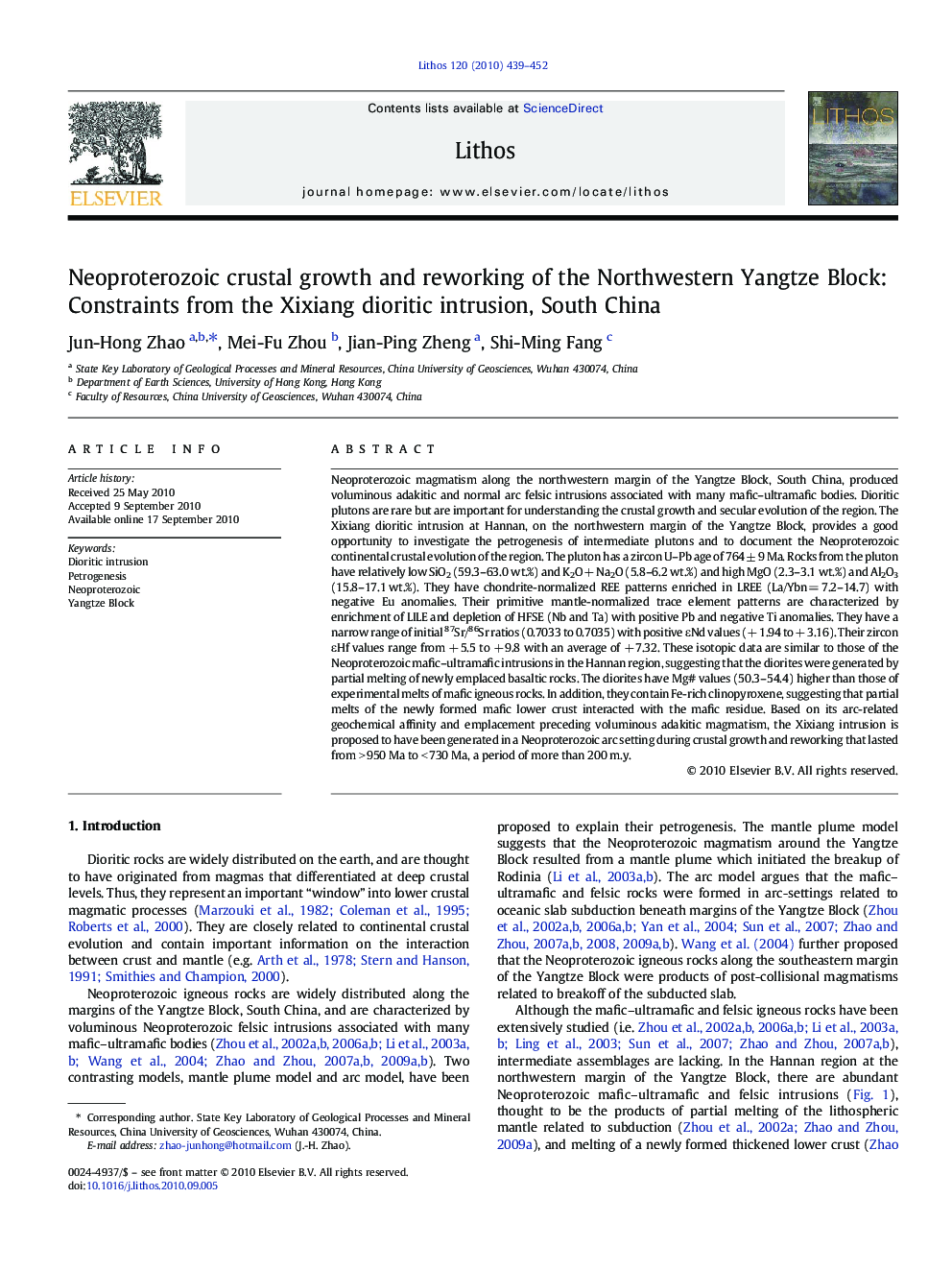| Article ID | Journal | Published Year | Pages | File Type |
|---|---|---|---|---|
| 4716857 | Lithos | 2010 | 14 Pages |
Neoproterozoic magmatism along the northwestern margin of the Yangtze Block, South China, produced voluminous adakitic and normal arc felsic intrusions associated with many mafic–ultramafic bodies. Dioritic plutons are rare but are important for understanding the crustal growth and secular evolution of the region. The Xixiang dioritic intrusion at Hannan, on the northwestern margin of the Yangtze Block, provides a good opportunity to investigate the petrogenesis of intermediate plutons and to document the Neoproterozoic continental crustal evolution of the region. The pluton has a zircon U–Pb age of 764 ± 9 Ma. Rocks from the pluton have relatively low SiO2 (59.3–63.0 wt.%) and K2O + Na2O (5.8–6.2 wt.%) and high MgO (2.3–3.1 wt.%) and Al2O3 (15.8–17.1 wt.%). They have chondrite-normalized REE patterns enriched in LREE (La/Ybn = 7.2–14.7) with negative Eu anomalies. Their primitive mantle-normalized trace element patterns are characterized by enrichment of LILE and depletion of HFSE (Nb and Ta) with positive Pb and negative Ti anomalies. They have a narrow range of initial 87Sr/86Sr ratios (0.7033 to 0.7035) with positive εNd values (+ 1.94 to + 3.16). Their zircon εHf values range from + 5.5 to + 9.8 with an average of + 7.32. These isotopic data are similar to those of the Neoproterozoic mafic–ultramafic intrusions in the Hannan region, suggesting that the diorites were generated by partial melting of newly emplaced basaltic rocks. The diorites have Mg# values (50.3–54.4) higher than those of experimental melts of mafic igneous rocks. In addition, they contain Fe-rich clinopyroxene, suggesting that partial melts of the newly formed mafic lower crust interacted with the mafic residue. Based on its arc-related geochemical affinity and emplacement preceding voluminous adakitic magmatism, the Xixiang intrusion is proposed to have been generated in a Neoproterozoic arc setting during crustal growth and reworking that lasted from > 950 Ma to < 730 Ma, a period of more than 200 m.y.
